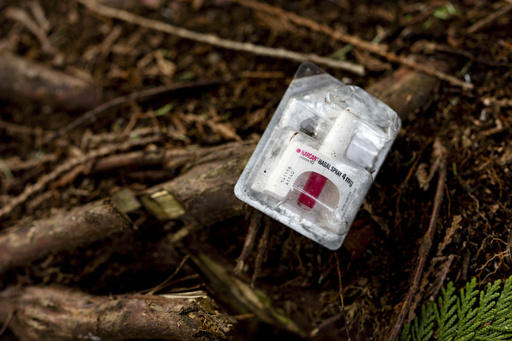NEW YORK – The ongoing decrease in drug overdose fatalities in the United States appears to be a continuous trend this year, sparking optimism among specialists that the nation may be experiencing a lasting improvement in the long-standing crisis.
As of June 30, provisional data from the Centers for Disease Control and Prevention (CDC) indicates there were around 97,000 overdose deaths within the last twelve months. This figure reflects a 14% drop from the estimated 113,000 deaths recorded in the preceding year.
Brandon Marshall, a researcher at Brown University who focuses on overdose patterns, commented, “This is a remarkable and swift turnaround in drug overdose mortality rates.” Beginning in the 1990s, overdose death rates increased steadily, primarily due to the misuse of opioid painkillers, followed by subsequent waves involving heroin and more recently, illicit fentanyl. The provisional data suggested a minor decrease in 2023, and the newly published figures indicate that this downward trajectory has persisted.
However, Marshall reminded that there have been instances in recent years where overdose deaths seemed to stabilize or even diminish, only to spike again later. He remarked, “This appears to be a significant and lasting reduction. I believe there is genuine cause for optimism.”
While experts remain uncertain about the underlying causes of this decline, they point to a potential combination of factors. One possible reason is the effects of COVID-19. During the peak of the pandemic, access to addiction treatment became severely limited, and social isolation increased, which resulted in fewer individuals available to assist in overdose situations.
“With the surge in drug overdose fatalities during the pandemic, it is only logical that we would eventually observe a decline,” stated Farida Ahmad of the CDC’s National Center for Health Statistics. Nevertheless, overdose fatalities still surpass the levels recorded at the pandemic’s onset.
The recent statistics might also reflect the success of extensive initiatives aimed at enhancing the accessibility of naloxone, a medication that can reverse overdoses, along with addiction treatments such as buprenorphine. Erin Winstanley, a professor at the University of Pittsburgh who specializes in drug overdose trends, suggested that funding from opioid-related settlement agreements could be playing a vital role. These settlements, pursued by various levels of government against drug industry entities, are delivering financial support to communities across the country, some of which have begun allocating funds for naloxone and related initiatives.
Shifts within the illicit drug market have raised questions among experts as well. The increasing presence of xylazine, a sedative found in illicit fentanyl, is currently being examined to determine its impact on overdoses.
The CDC data shows declines in overdose death rates across 45 states, while increases were observed in states like Alaska, Nevada, Oregon, Utah, and Washington. Notable decreases were reported in North Carolina and Ohio, although CDC officials cautioned against rushing to conclusions. In certain areas, delays in updating death records to federal authorities persist, particularly in North Carolina, where staffing shortages have hindered death investigations. The CDC has made attempts to estimate incomplete data, suggesting that the actual reductions in some regions may be less pronounced than the initial numbers indicate.
Another drawback of the provisional data is its lack of detail regarding various demographic groups. Recent analyses have highlighted that overdose deaths among Black and Native American communities are growing at an alarming rate. Brandon Marshall emphasized the necessity for more comprehensive data from the CDC to ascertain whether the observed declines are consistent across all racial and ethnic categories.



